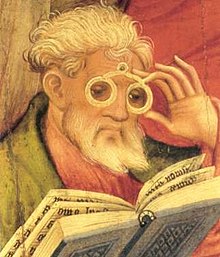Introduction
Everyday is a day to learn something new. As my interest for achondroplasia grows stronger, I have joined a small number of groups related to this genetic condition in Facebook, where I keep learning a lot.These groups, most of the time hosting very rich discussions or simply the sharing of experiences of parents or individuals with restricted growth conditions, in which wisdom is prevalent, also witness harsh debates regarding current (surgical) and potential (drugs in investigation) therapies for achondroplasia. Nevertheless, while sincere comments and questions such as why should we treat something that is normal? or she (the kid) is perfect as she is, a gift of God are common, sometimes we can also see others full of rage, bearing prejudiced thoughts like do you want to extinguish the race? (the person who expressed this thought was referring to a "dwarf race") Believe me, this one I read this week and is the one which motivated me to publish this text.
It is about who we are
There is just one race, the human race. With all its presentation package diversity. Very, very frequently, the package is not perfect, but the imperfections come in a wide range of severity levels. Sometimes it is just a hemangioma in the skin, or a bad vision, because the eye lens is distorted and you cannot see far away (myopia). Rarely, the imperfection is so severe that it is not compatible with life, like in anencephaly. In other cases, the imperfections will appear later in life (and they are also extremely common).
Humans have been evolving and learning how to deal, manage, treat and more and more, cure these imperfections. Long time ago, glasses have been invented to correct some of the eye issues (Figure 1) and magnification was the great tool for Galileo to develop his heliocentric theory. But now, not only there are millions of fashionable glasses and the Hubble, but also to treat (and cure) myopia and other eye conditions, corrective surgery is often available. Or you can just drip drops in your eyes to treat your glaucoma.
Figure 1. Glasses in the XV Century. (from Wikipedia)
In the last century, strong and respectable organizations have grown defending social rights and have been fighting hard to improve the life of individuals affected by genetic conditions that lead to growth restriction. They came together with the raise of other social organizations which defend other minorities' rights. These organizations have been fighting a long fight to establish benefits for those that have to handle more challenges in the daily life. It took many decades for Americans of African origin to gain the same social rights other Americans had. Society now has more awareness about the diversity of the human race.
So, when someone comes and says that therapies for dwarfism are a threat to the race, something is really wrong. This kind of argument goes against all that has been achieved by these renowned organizations.
The state of Health
One year ago, thinking about those debates about why should we treat achondroplasia or any other condition or disease that brings suffering to the individual affected, I have published the following text in the Achondroplasia group in Facebook. Suffering here means any kind of challenge one may face in an unbalanced manner, in a way that someone who is not affected by that condition would not.
There has been a lot of controversy around therapeutic options for achondroplasia and other types of dwarfism lately. The target today are surgical interventions such as limb lengthening, which is a feasible option to those who decide for it.
Limb lengthening would not eliminate a gene mutation. So, this would not be the case of vanishing the human diversity. It would also not correct all medical issues that may occur in someone with achondroplasia. However, it may correct some of them, such as the lumbar lordosis that may worsen the common spinal stenosis and the common varu legs, which also are cause of undue pressure on knees, with known consequences, among other medical benefits.
In the context of publicly charging against those who decide to go for these surgical interventions, social and psychological aspects have been also frequently underestimated and are put together with the cosmetic aspect to reduce their relevance.
The state of Health is more than just not being ill, as has been defined almost 70 years ago by the World Health Organization:
"Health is a state of complete physical, mental and social well-being and not merely the absence of disease or infirmity."
It is an individual right to decide or not for a path or another. For example: one can decide if he/she will have a surgery for myopia or continue to use glasses. One can decide to have breast prosthesis implanted after a surgery for breast cancer. One can argue that both above procedures are cosmetic in first place, but in fact they are targeting needs that go beyond the mere physical state of health.
One may not agree with a decision by another individual, and this is also one's right. But why does one fight so hard against something that may bring many benefits (real or imagined) for the other?
Therapies for achondroplasia and other forms of dwarfism will be a reality in the next decade and this is good.
Today, the quest is surgery. Tomorrow, it may become a pharmacological therapy. Both approaches may be understood as aiming one goal only: to improve the Health of the individual, in the broad terms of the WHO definition.
Think about it.

No comments:
Post a Comment